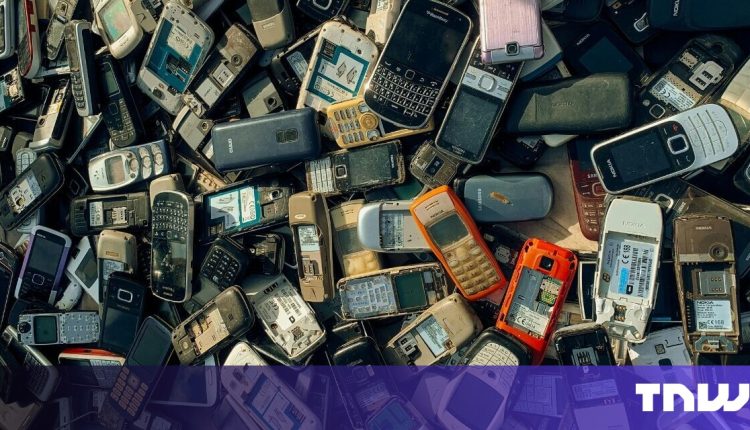E-WASTE has become a global problem. Unfortunately, the majority of the rejected technology, which referred to as an electric waste, is unloaded or processed under uncertain conditions. Around 78% Electronic products are not properly recycled – and the garbage heap continues to grow.
In 2024 the world turned out 1.22 billion smartphones. Add this to the billions of televisions, laptops and computers, and what we have is a saturated market that drives a throw -away cycle.
A Report of the United Nations Predict that e-waste will grow to 80 million tons by 2030. Eric InbetretsenChief Commercial Officer at SK TesThe 40 global it asset disposition (ITAD) sides and processes hundreds of millions of pounds electronics every year.
Of course, the world urgently needs e-waste projects that can reverse the global situation during you.
A Danish robot solution
TNW City Coworking Space – where your best work happens
A area of work for growth, cooperation and endless networking opportunities in the heart of technology.
On The Danish technology instituteResearchers build a AI-controlled robot system that could help combat the e-waste and at the same time scale, modernize and strengthen the technical renovation industry.
TNW received a demo of the project of Mikkel Labori OlsenA consultant in robotics technology at the institute and researcher on Robosapia Project that aims to make the robot Human interaction safer. His team develops a robot that automates the laptop renovation and creates a source of income and at the same time reduces the e-waste.
The system is equipped with a robot arm, a dedicated toolbox and a camera. It is trained to replace laptop screens-a manual and time-consuming task of fighting for local companies due to the tedious processes to find workers, said Olsen.
Olsen and his team have already trained the robot to replace the screens of two laptop models and their submodels. You are now working hard to expand the robot’s screen dismantling to more laptop models and brands.
The robot combines AI and visual detection to adapt to different laptop types, remove the plastic protection, unscrew the screens and carefully remove them. A New VIdeo shows it in action.
“We can drastically reduce waste if we throw out a perfectly useful laptop, we simply change the screen and then sell it again,” says Olsen.
The business value of e-waste
Depending on the region, the laptop model and other circumstances, a renovated laptop can be sold for around € 200, while the material value of a recycled laptop – preserved by grinding the entire device – is only about € 10, says Olsen.
“The essence is that by changing some components and in particular a few simple components, you can make great value from it instead of only selling the recycled components,” he adds.
The training of the AI, which operates systems like Olsens, is a challenge. If the robot meets unexpected events that were not in his data record, it may be difficult to do tasks. Even small details such as different colors of screws could require a new AI training to expand the data record on which the system relies.
These unexpected events are the reason why robot systems in the technology recycling industry have to include people in the loop, says Olsen. You could tackle all problems with the robot flags.
Why is E-Watste an unused billion dollar industry?
The value of e-waste is incredibly high. A Toned smartphones thrown away Gives more gold than a ton of broken gold, as can be seen from a report by the clever group.
“In addition to gold, components such as copper, silver, palladium and rare metals are crucial for the production of the technological hardware that the world demands,” says SK Tes.
Most of the e-waste is never recovered. But why are the Tech industry not the Tech industry? or Other sectors who tap this market?
According to Olsen, the field worldwide still has to be recognized as a considerable value. However, companies slowly wake up with the potential of e-waste robot robot recycling.
Another factor that holds back the technology is costs. “Robots and automation are expensive and complex,” says Olsen.
An additional challenge is the overwhelming variety of hardware, components, devices, model variations and conditions of e-waste products if they are found
This causes problems when building robot systems that can adapt to various e-waste devices without hitting. AI who can do this is very progressive and mainly in research and development.
Modern technical problems – and solutions
When the technology becomes more compact, the manufacturers change the way they build devices. They often glue the components together instead of using screws to use disassembly and recycling without very difficult to damage the components.
Despite these challenges, Olsen is optimistic. It is impressed by the progress that are achieved by local, European and international companies that align their game either to the renovation of technology or recycled components.
In Denmark and companies like Tier 1aPresent RTBAnd Greenmind Show renovation can be a scalable business model. “Some of these companies aim to renovate up to 2,000 units a day,” says Olsen.
Olsen and his team plan to further expand the skills of their robot system. The goal is that it recognizes many different laptop models and submodels. Ultimately, you would like to build a robot system for production for products that supports local Danish Tech renovation companies.
Its optimism makes sense: robotics will re-change the future of e-waste management and reuse. From Denmark to global recycling operations, AI-operated systems are developed to identify, sort and reduce devices with precision.
These robots enable automation more dangerous and labor -intensive tasks and improve security and efficiency. You will also unlock the hidden treasure of electric waste.


Comments are closed.